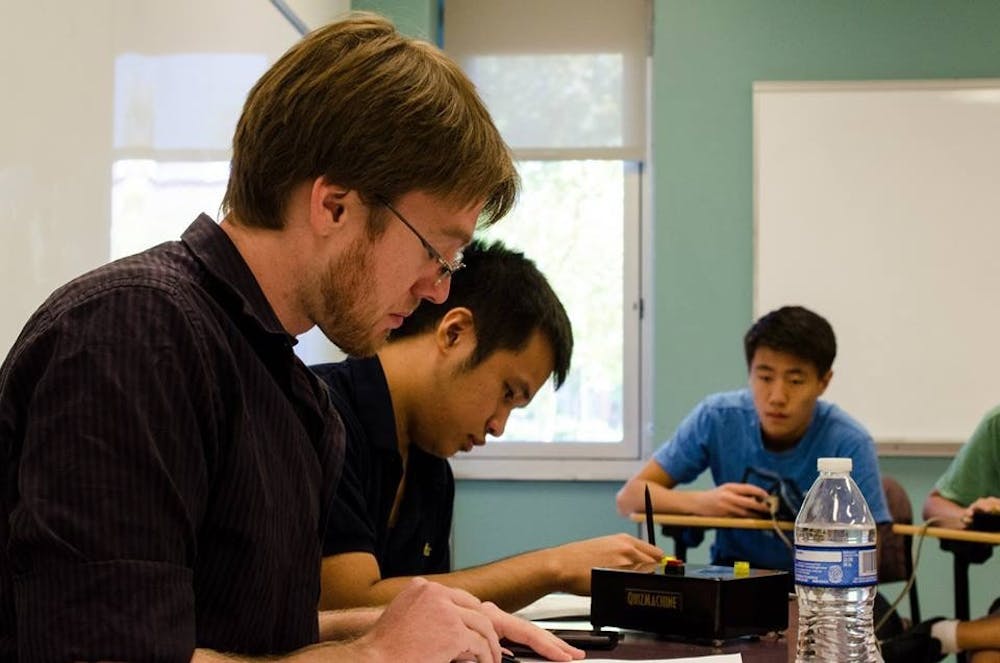Receiving an athletic scholarship sounds like a dream; you don’t have to pay for tuition, housing, food or travel expenses, but the sad truth is that it's not all it's cracked up to be. There are many misconceptions regarding athletic scholarships, especially their availability. In most cases, academic scholarships are more beneficial and plentiful, and students should perhaps spend more time focusing on their academic success over their short-lived athletic success.
Those who played sports in high school know what I mean when I say that it is easier said than done. Youthful optimism makes it easy to believe that anyone could play sports at the college-level. Many would even say that they could get paid to do so. This is not the case, however. Being invited to play any sport at the college level is rare, and having all expenses paid for by an athletic scholarship is even more rare.
For example, only 3.3 percent of individuals playing men’s basketball in high school were estimated to receive NCAA positions in 2014. Similar figures were estimated for soccer and football at the college level. This value doesn’t even account for the number of individuals expected to receive athletic scholarships. According to CNBC, one is more likely to be accepted to Harvard, Stanford, Princeton or Yale than to receive an athletic scholarship.
Additionally, it is important to note that very few athletes receive full rides to college. The coaches are typically left with the power to distribute the money endowed to their program, so the decision to give full ride scholarships is left to them, and rarely would they dedicate that much money to one player.
On average, in 2013, NCAA Division I male athletes received $13,821 while female athletes received $14,660. Even less money was given to Division II athletes, and no athletic scholarships were awarded to Division III athletes.
In addition to low availability, these scholarships are highly conditional. Retaining these scholarships, in some cases, can be even more difficult than obtaining them.
Many athletes can’t take the time commitment. Often times, Division I athletes are required to commit upwards of 35 hours a week to training. Simultaneously, athletes are expected to keep their grades up, so they are required to dedicate almost the same amount of time to their studies. Those who can’t take this commitment quit and are left to pay full tuition.
Similarly, injuries can end a student’s athletic career in the blink of an eye. Depending on the recovery time of the athletes, their scholarships could be dropped, and once again, they would be forced to pay for college on their own.
All things considered, it would be smarter for high school students to focus on their academic success. To foster one’s ability to learn would be much more reliable than partaking in an activity that is most likely sustainable only for a short period in your life. Athletes’ careers are very short and risky, and they rarely yield success; whereas, academic success could aid you in your career in the long-run.
Not only are academic scholarships a more realistic goal, but they are also significantly more available to students.
According to The Wall Street Journal, there was 9.5 billion dollars in academic scholarships and only 1 billion in athletic scholarships in 2007-2008, about nine times more. To further illustrate this point, about 16.9 percent of undergraduate students received merit-based aid while only 1.4 percent received athletic-related aid.
It is understood that a great deal of money is dedicated to athletics simply because most schools take pride in their athletic programs, and because they raise a great deal of money for the university, but the fact is that, in the end, academics are the number one priority of universities nationwide, as they should be. For people to believe that their chances of receiving an athletic scholarship is high or that they are likely to have a long-term athletic career is unproductive.
Related Links:
Scholarship Maintenance Plan will help students keep financial aid
ASU supports first-generation students, provides scholarships
Reach the columnist at ghirneis@asu.edu or follow @ghirneise2 on Twitter.
Editor’s note: The opinions presented in this column are the author’s and do not imply any endorsement from The State Press or its editors.
Want to join the conversation? Send an email to opiniondesk.statepress@gmail.com. Keep letters under 300 words and be sure to include your university affiliation. Anonymity will not be granted.
Like The State Press on Facebook and follow @statepress on Twitter.




